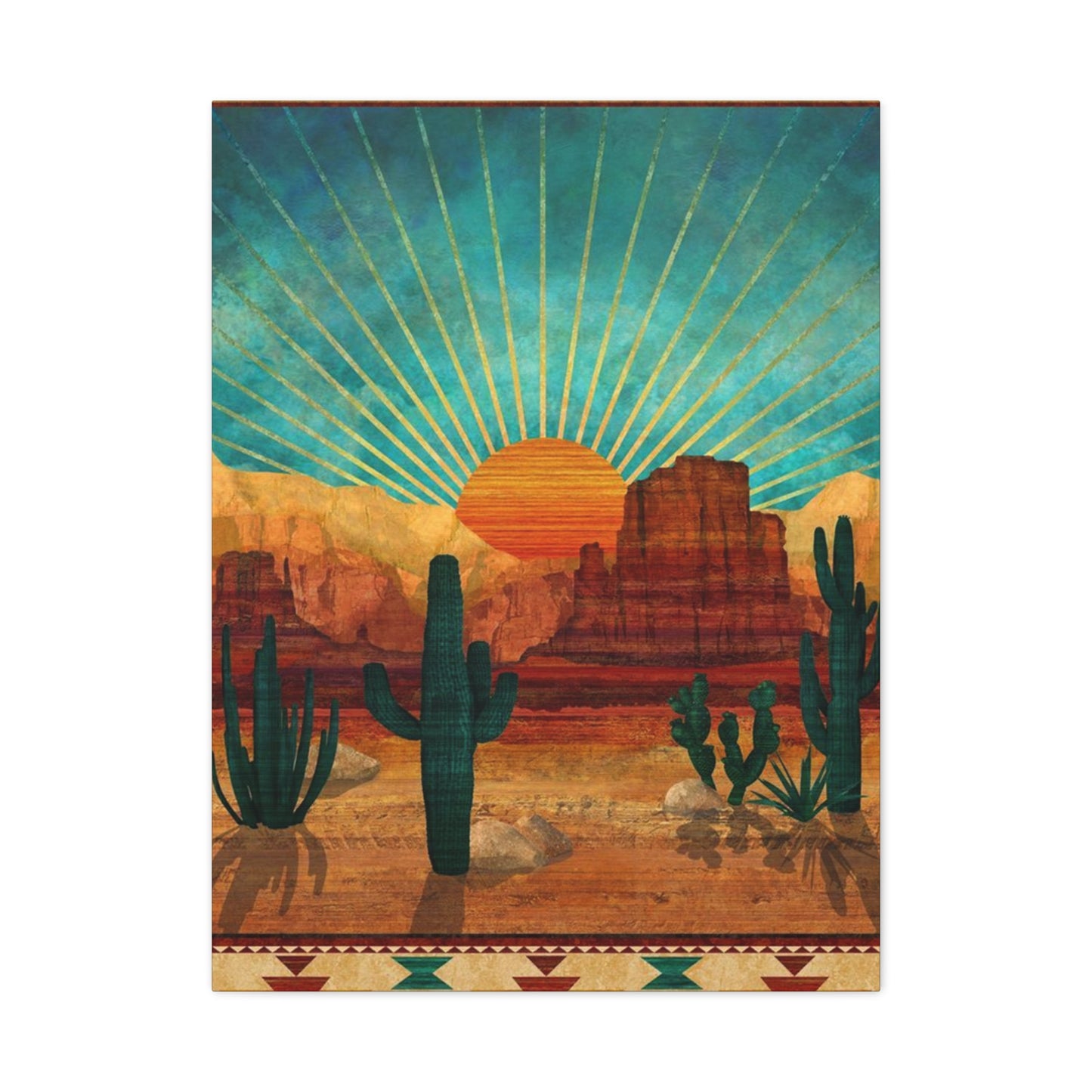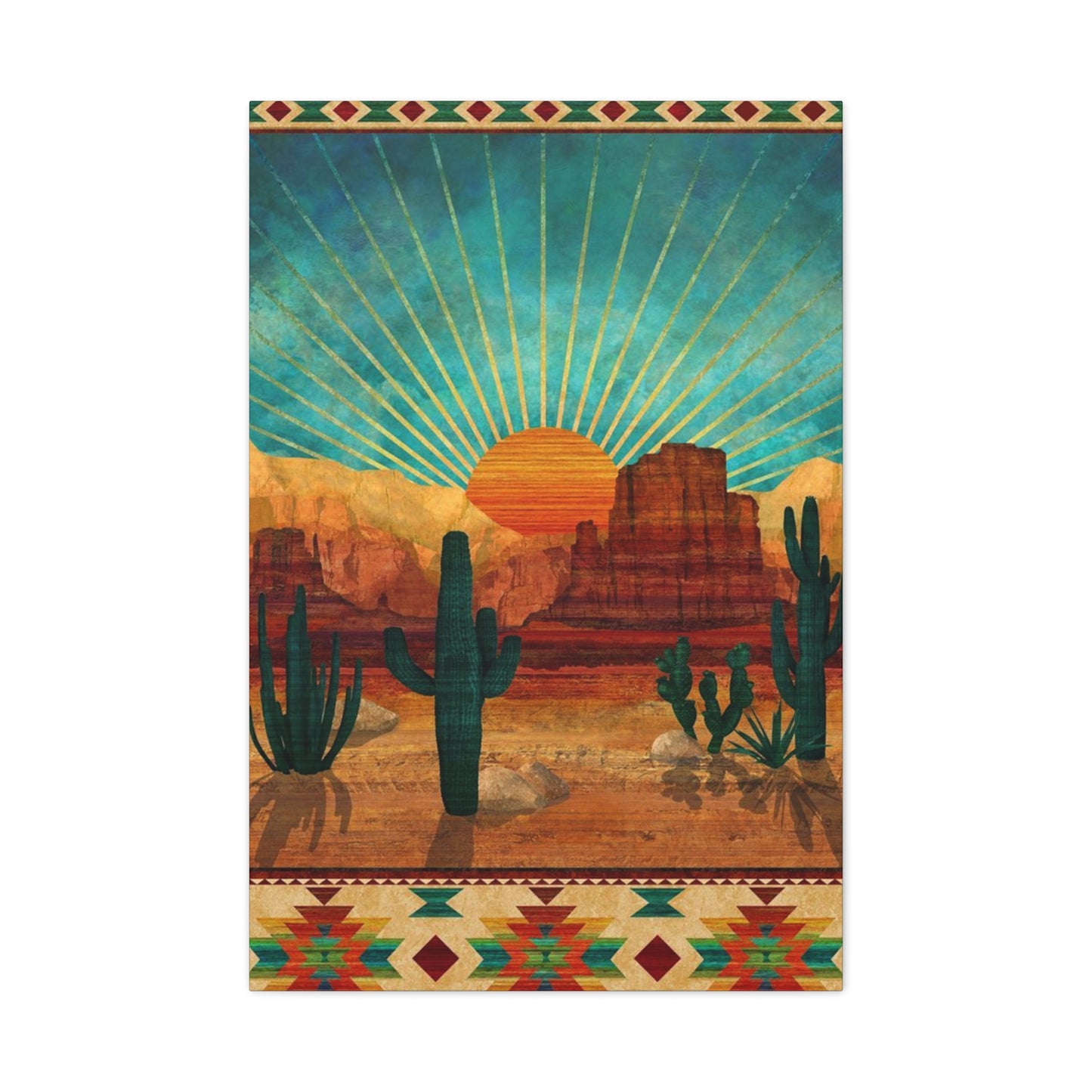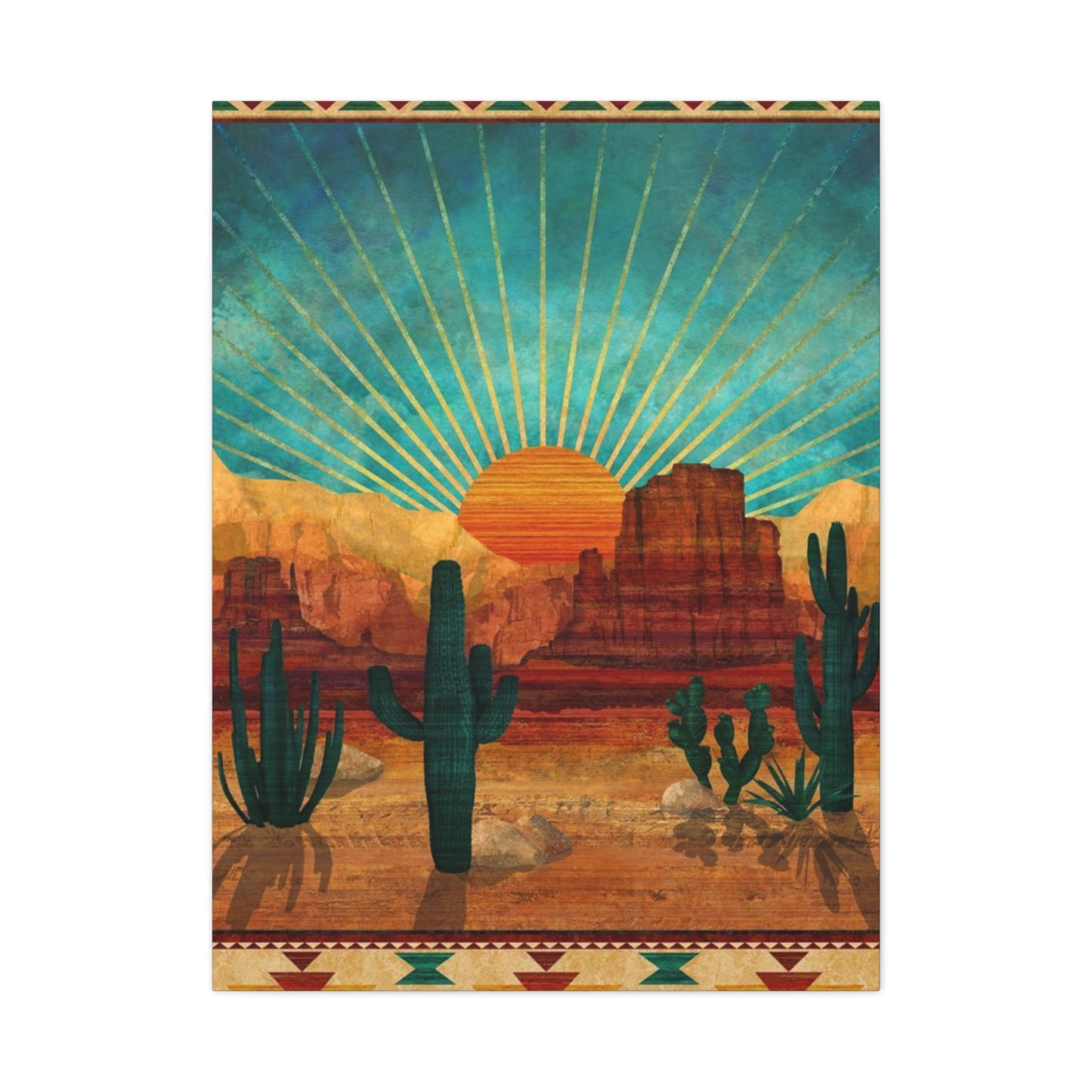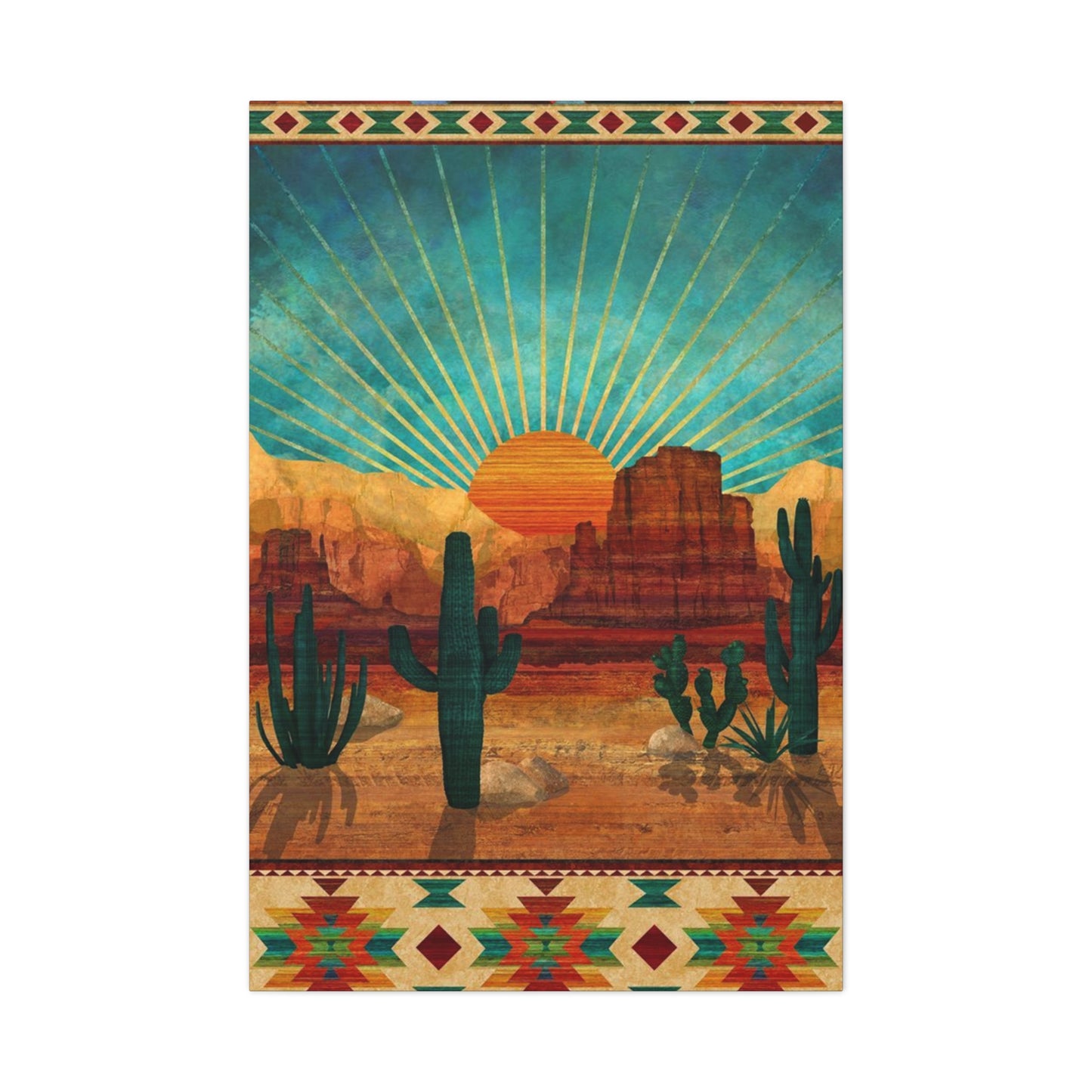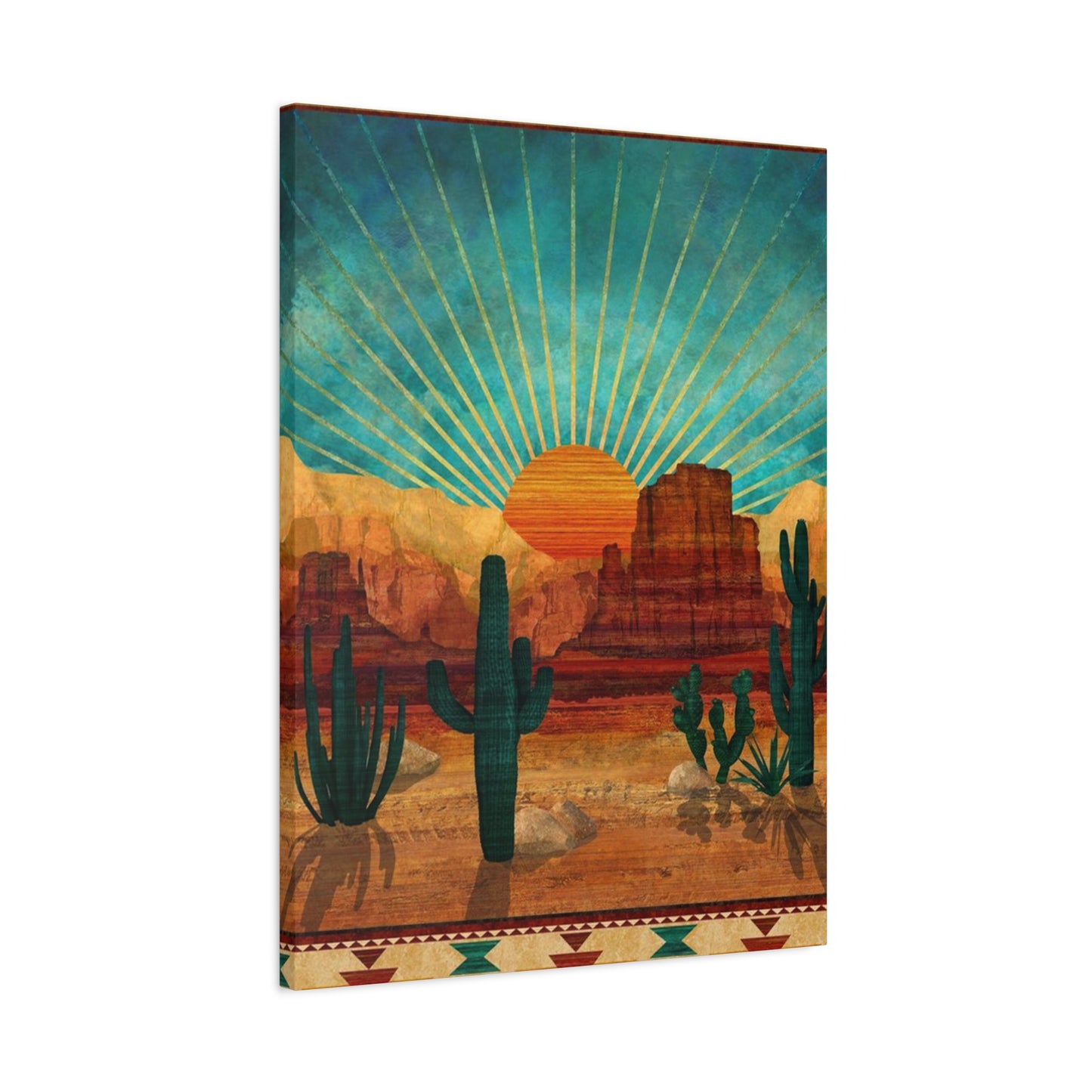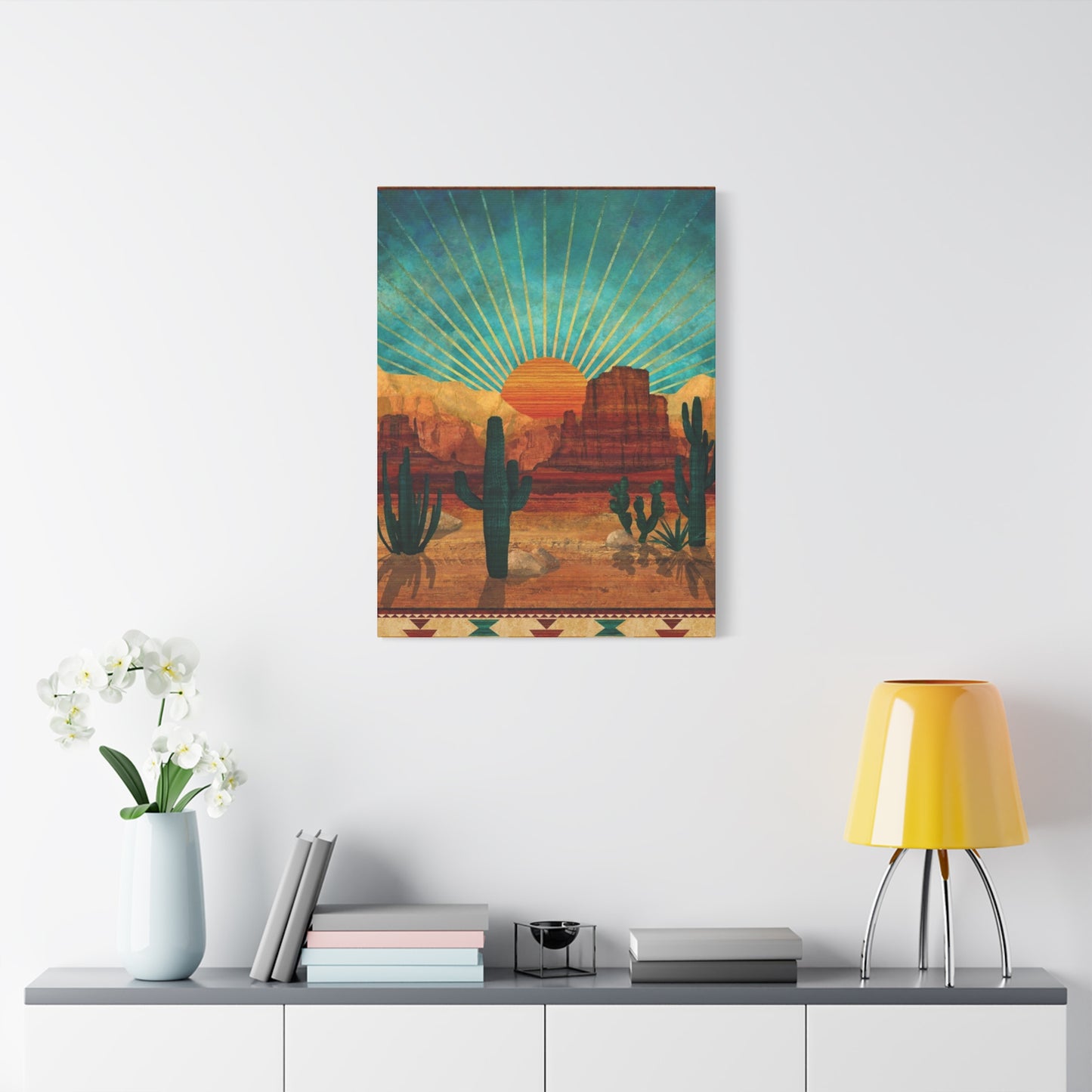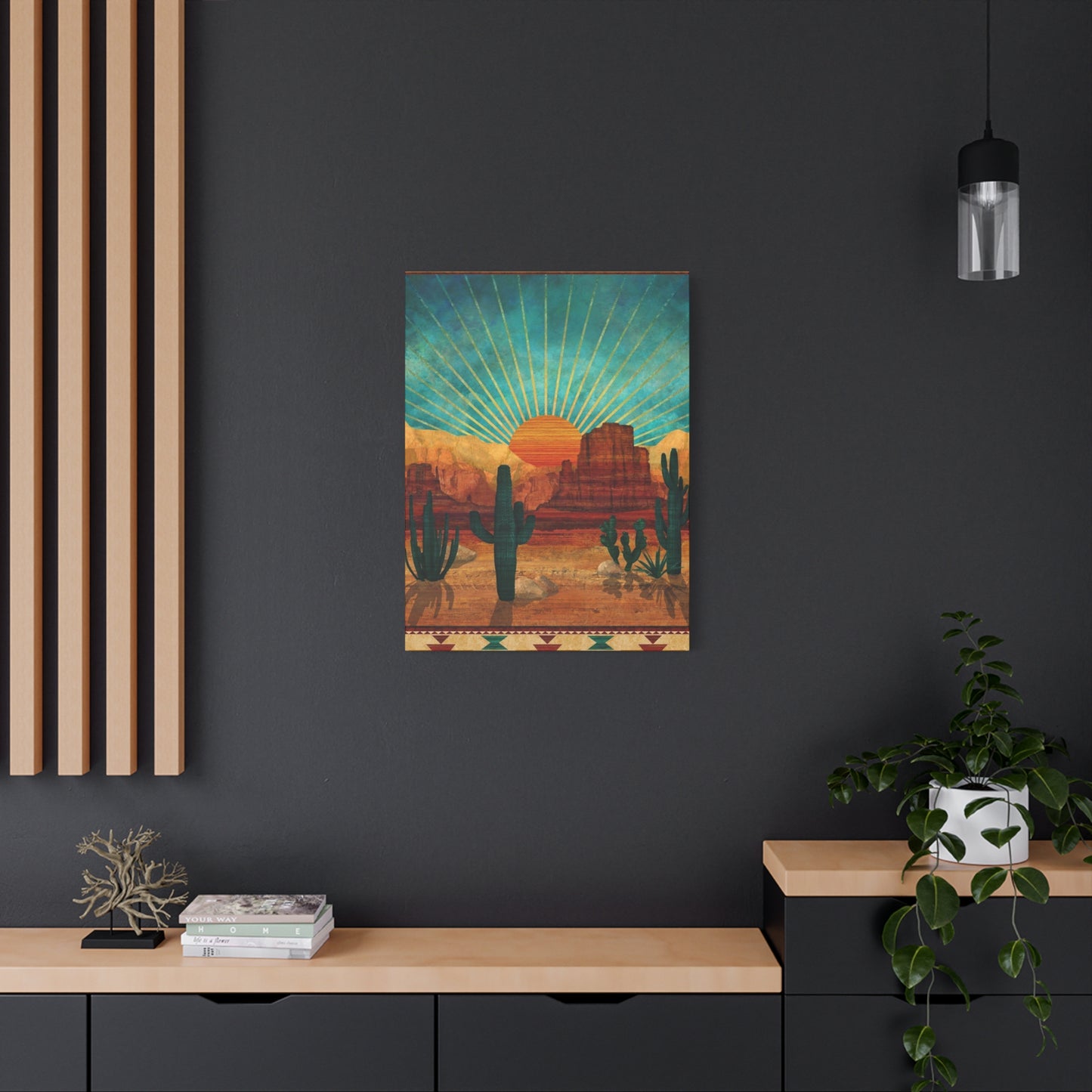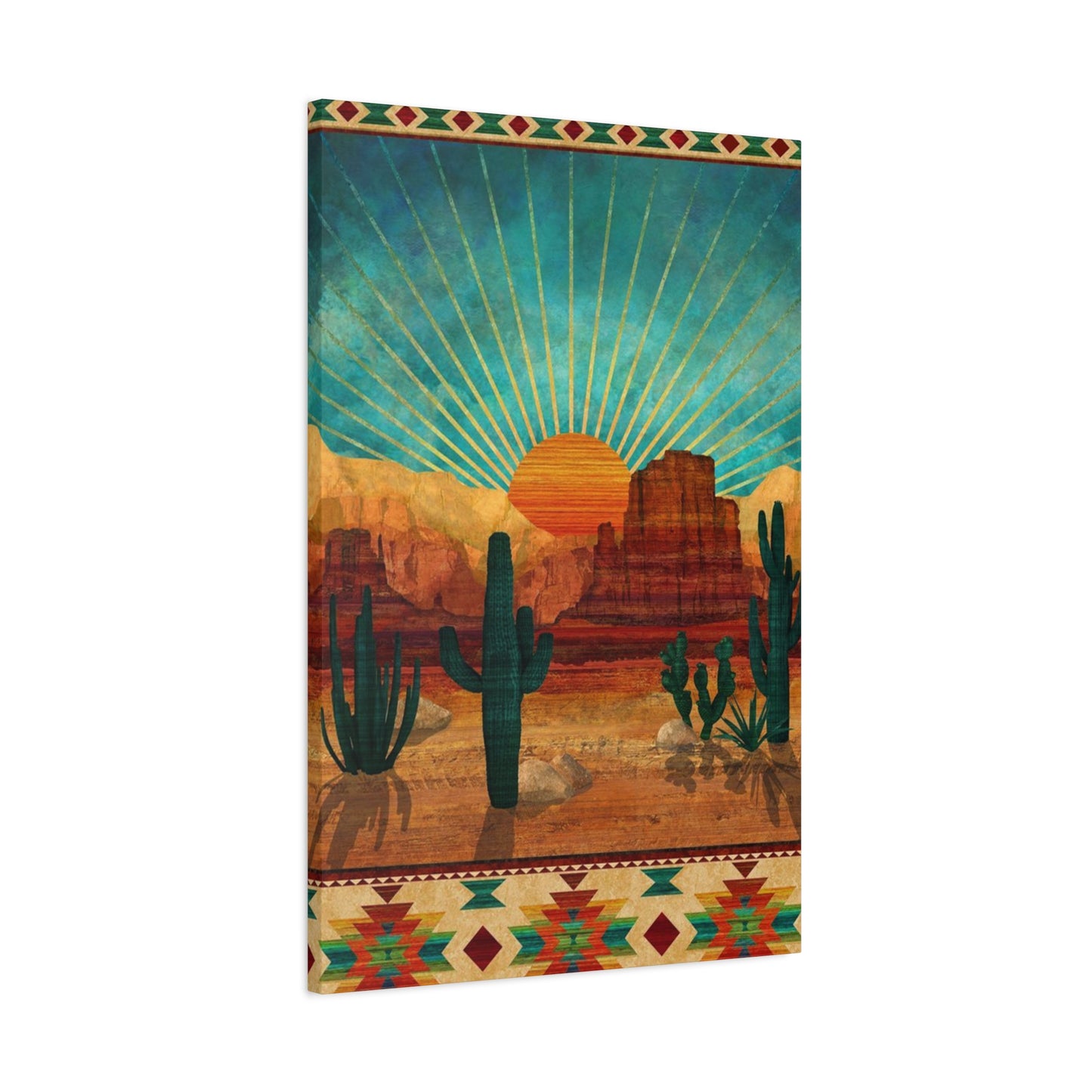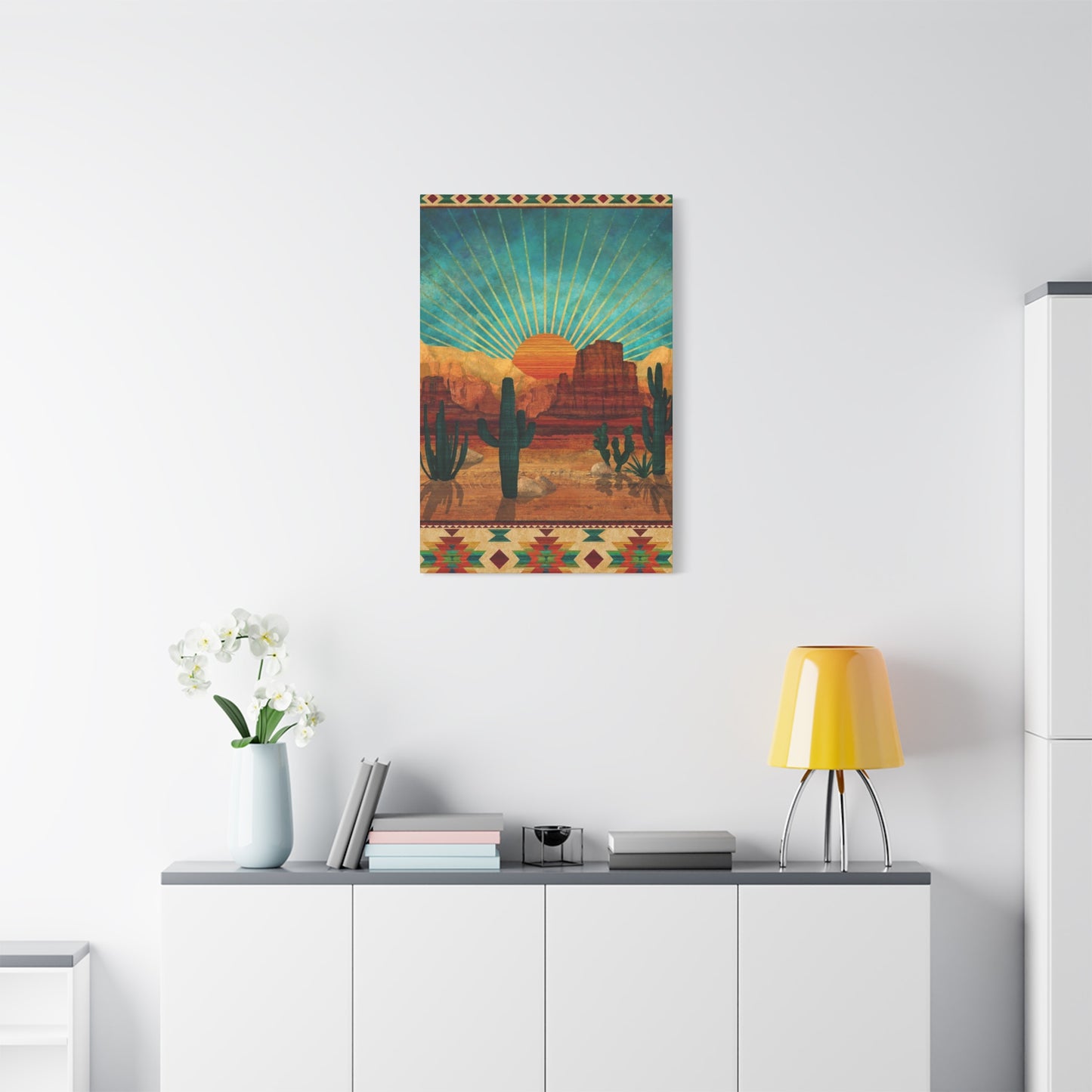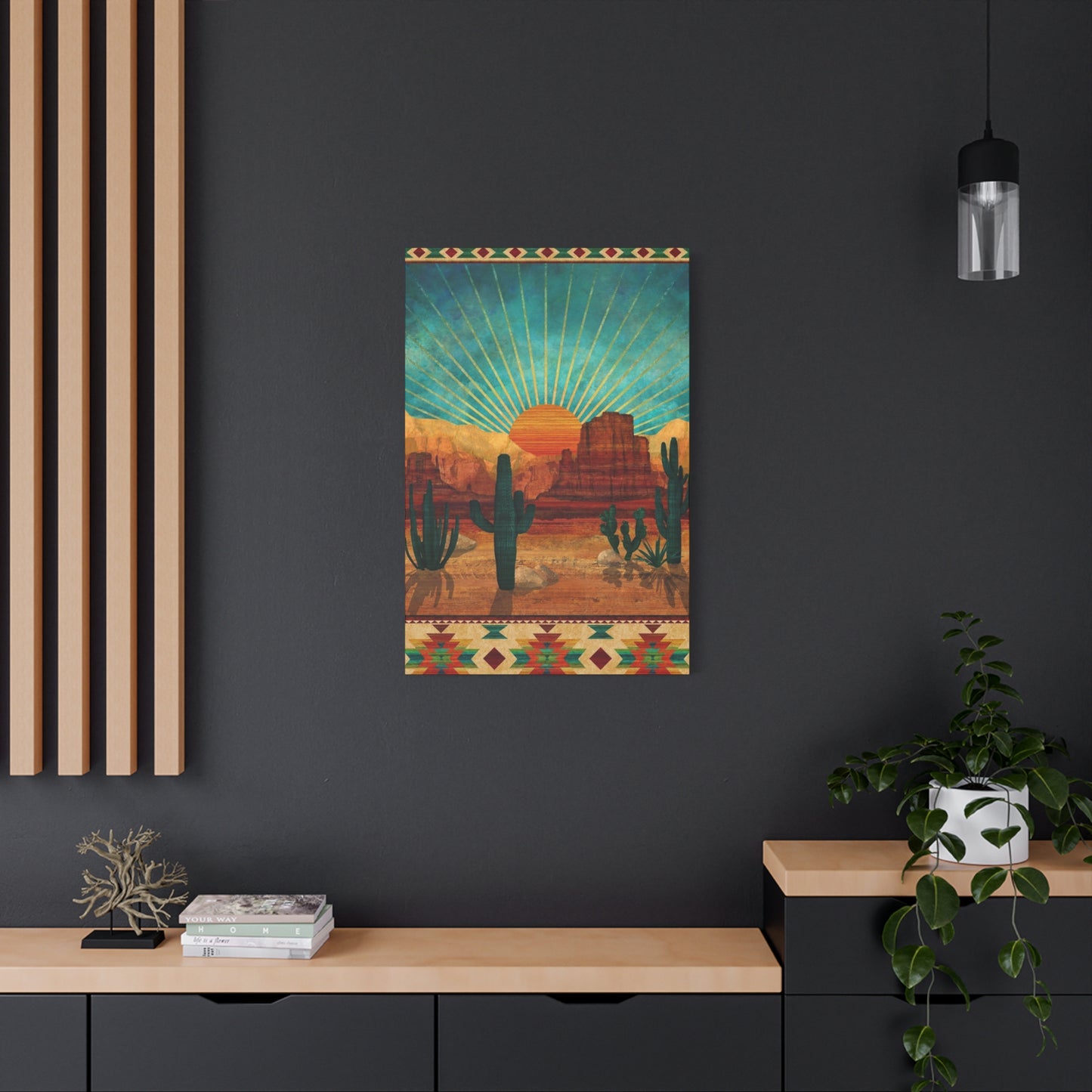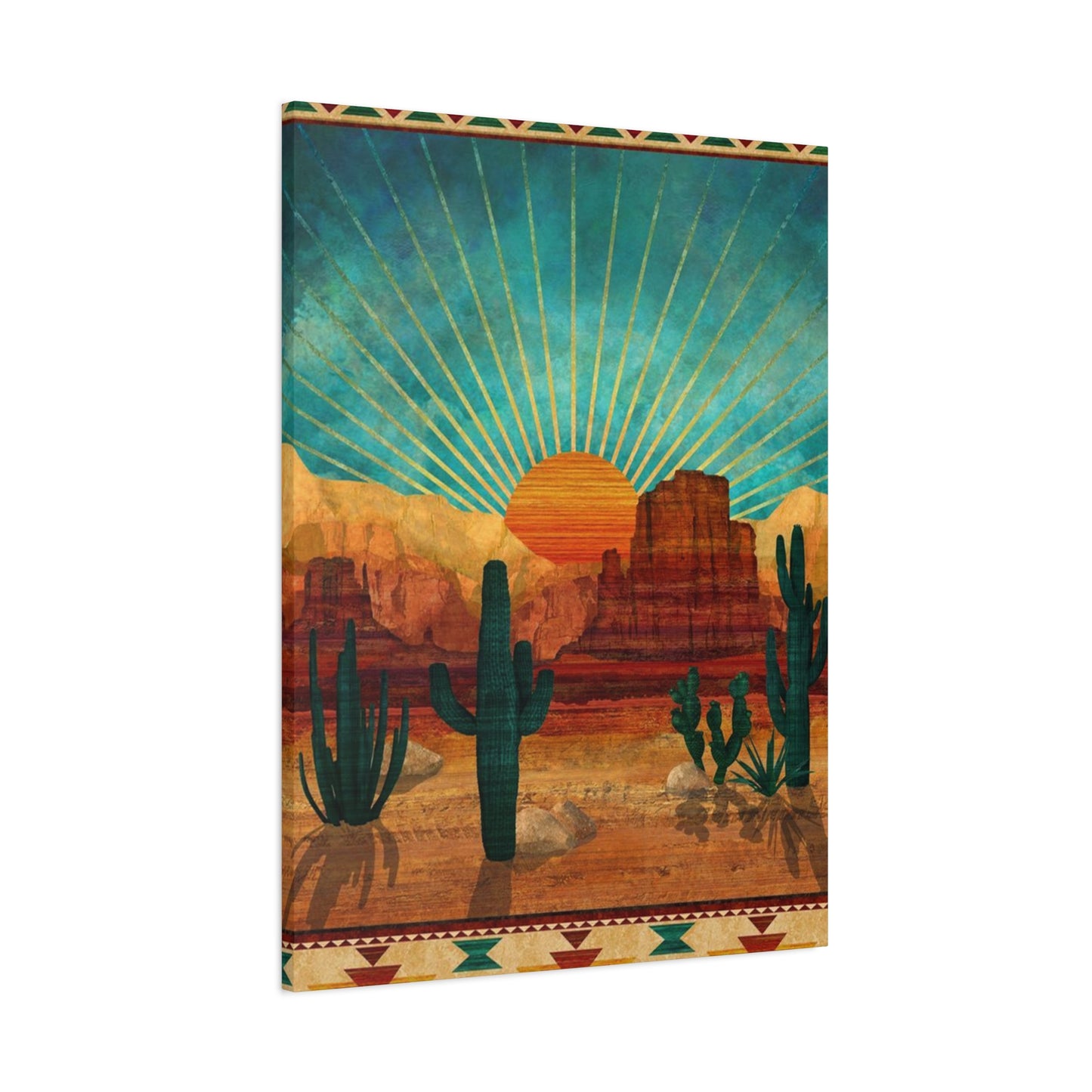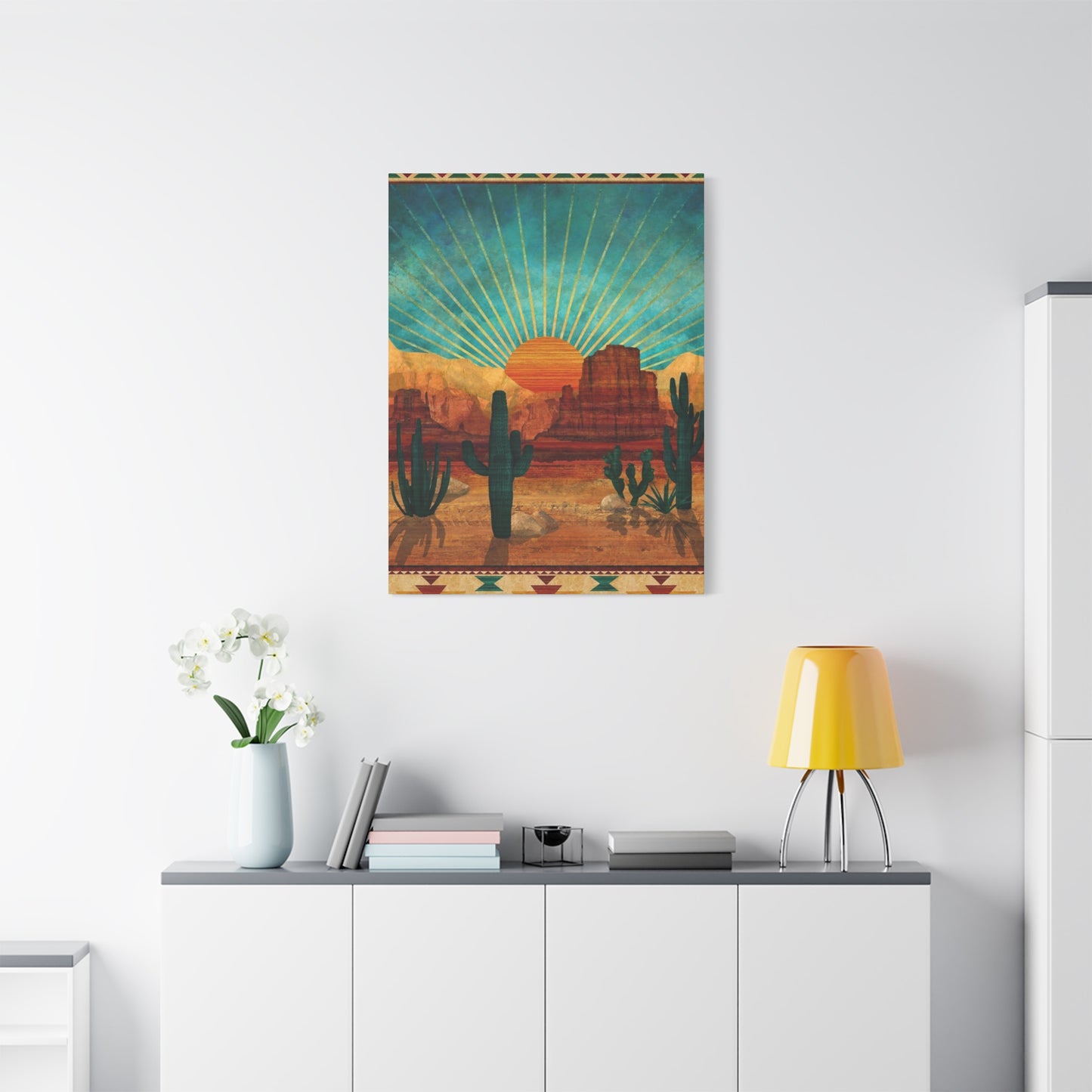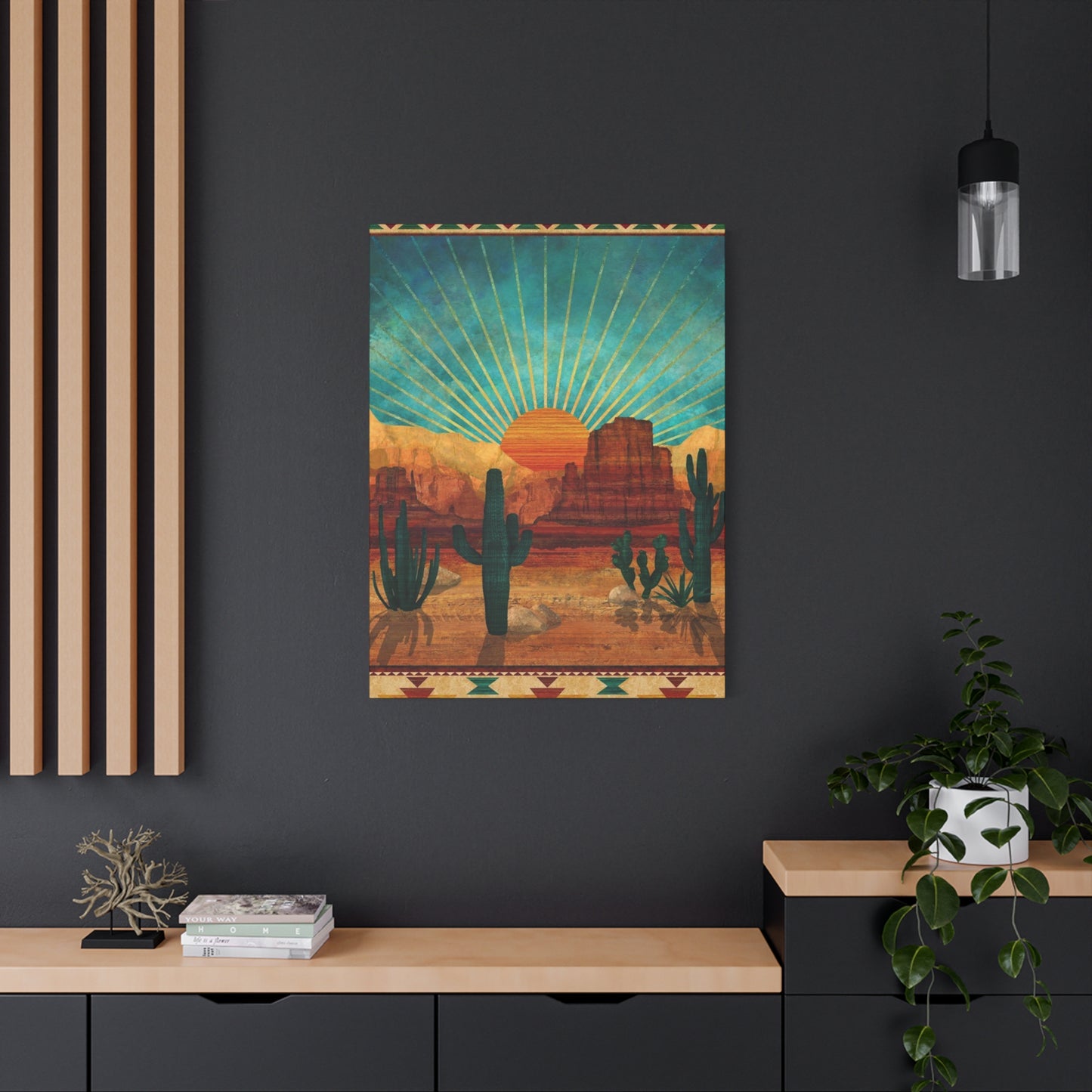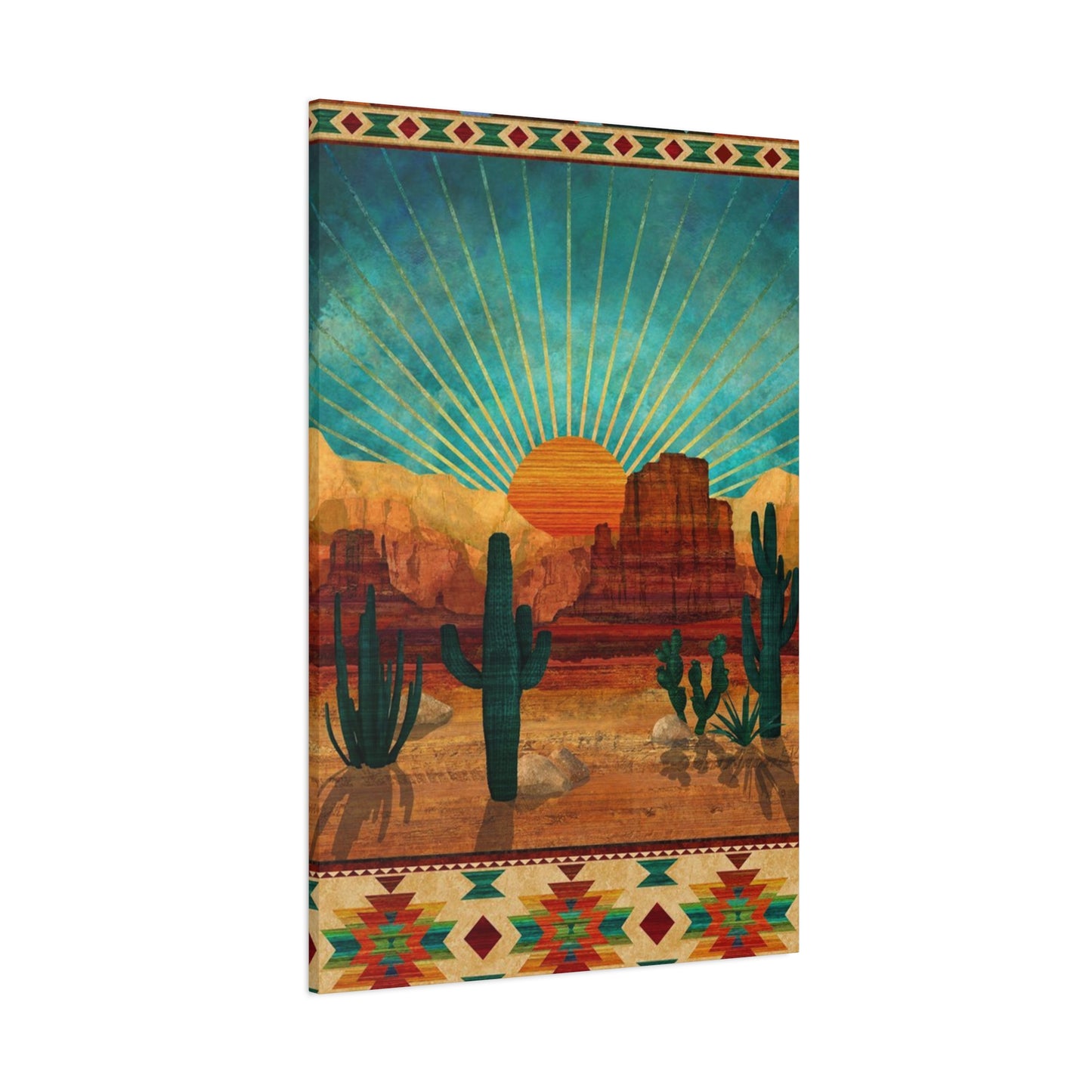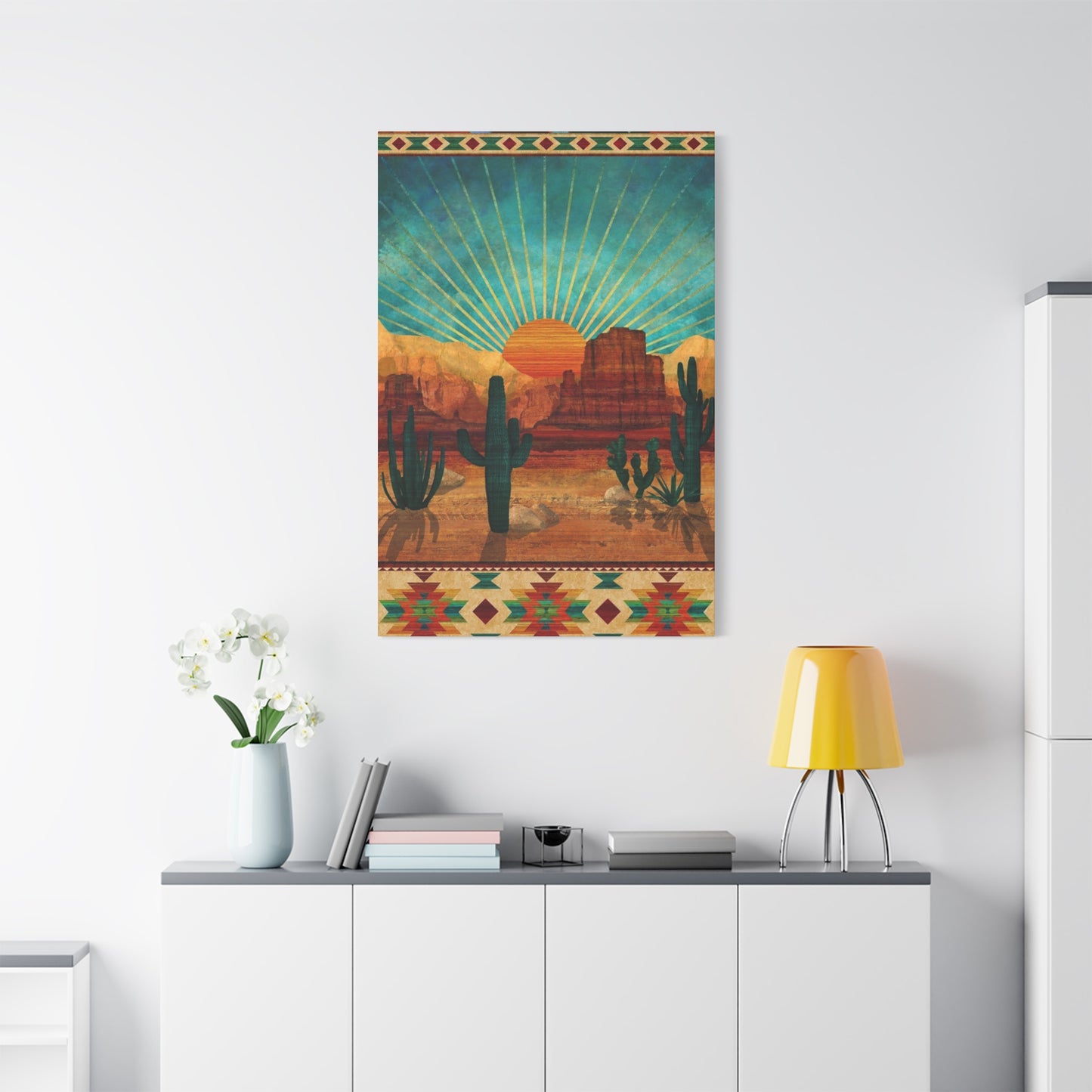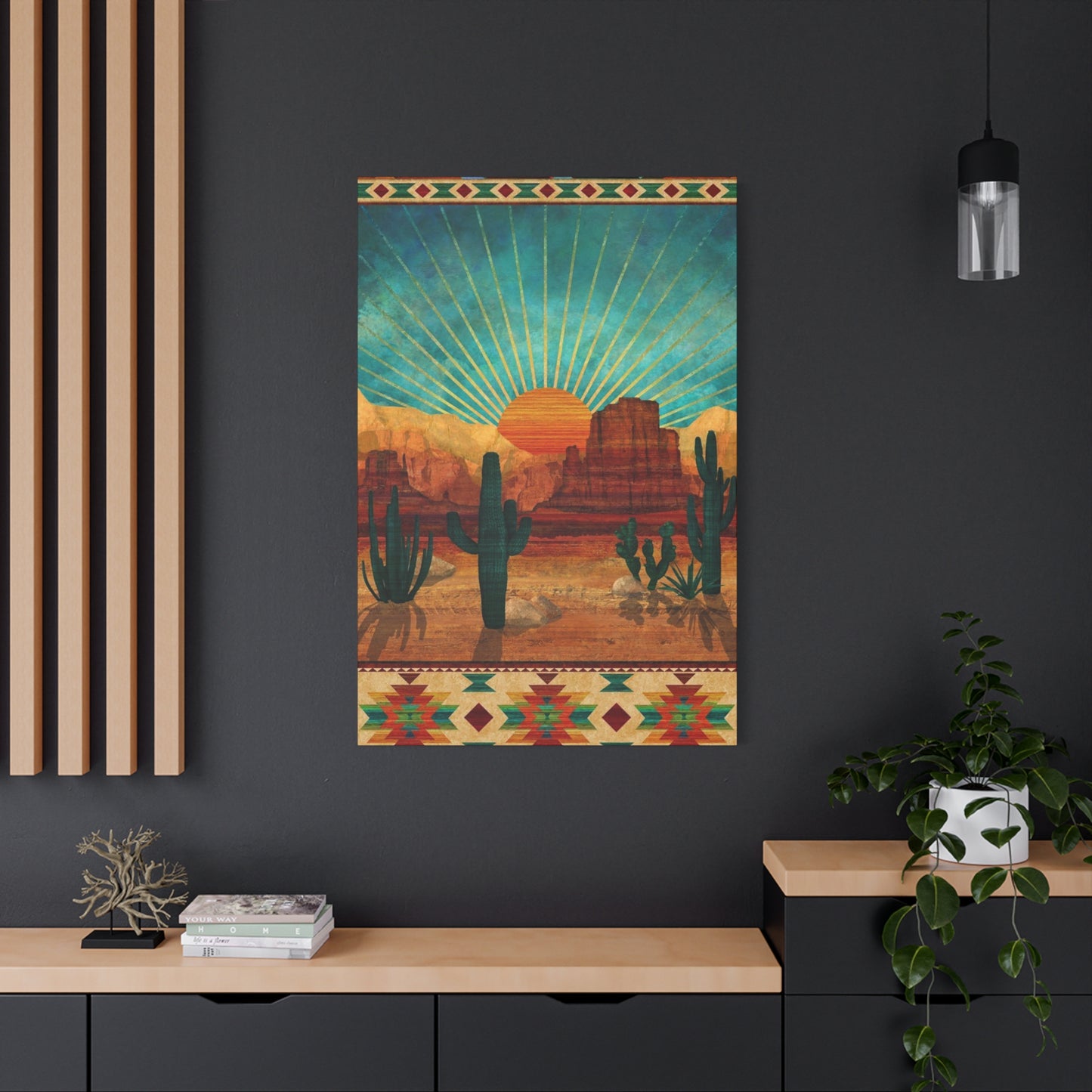Transform Your Space: Complete Guide to Desert Sunrise Wall Art for Contemporary Living
The breathtaking beauty of dawn breaking over arid landscapes has captivated artists and admirers for centuries. When the first rays of sunlight touch the sand dunes and rock formations, they create a spectacular display of colors that range from deep purples to brilliant oranges and soft pinks. This natural phenomenon has inspired countless artists to capture these moments on canvas, creating stunning pieces that bring the majesty of nature into homes and offices around the world. The popularity of these artistic creations continues to grow as people seek ways to connect with nature and add warmth to their living environments.
Desert sunrise imagery represents more than just decorative pieces. These artworks carry the essence of new beginnings, hope, and the raw beauty of untamed landscapes. Each piece tells a story of transformation, as darkness gives way to light, and cool night temperatures surrender to the warmth of day. The unique color palettes and atmospheric qualities found in these works make them versatile additions to various design schemes, from contemporary minimalist settings to more traditional arrangements.
The appeal of these artistic representations extends beyond their visual beauty. They evoke feelings of tranquility, adventure, and connection to the natural world. For those who have witnessed the magic of dawn in arid regions, these pieces serve as cherished reminders of those experiences. For others, they offer a window into landscapes they may have never visited, bringing the wonder of distant horizons into their daily lives.
Capturing Desert Sunrises on Canvas
The process of translating the ephemeral beauty of dawn over arid landscapes onto canvas requires exceptional skill, patience, and deep understanding of natural phenomena. Artists who specialize in this genre spend countless hours studying how light interacts with sand, rocks, and the atmosphere during those precious moments when day breaks. The challenge lies not just in replicating colors, but in capturing the very essence of that transformative time when the world awakens.
Professional artists often begin their creative journey by experiencing these moments firsthand. They travel to remote locations, sometimes camping overnight to ensure they are positioned perfectly when the first light appears on the horizon. These dedicated creators take extensive photographs, make color notes, and create quick sketches to reference later in their studios. However, the true artistry comes from memory and emotional connection, as they strive to convey not just what they saw, but what they felt during those magical moments.
The technical aspects of rendering dawn scenes require mastery of color theory and atmospheric perspective. Artists must understand how colors shift and blend as light travels through different layers of atmosphere. The warm hues that characterize these scenes are not random applications of paint, but carefully calculated color relationships. Oranges, reds, and yellows must be balanced with cooler tones of purple and blue to create depth and dimension. The contrast between the warm sky and the cool shadows cast across the land creates the drama that makes these pieces so compelling.
Texture plays a crucial role in bringing authenticity to these works. The rough, granular quality of sand, the weathered surfaces of rock formations, and the smooth gradations of the sky all require different techniques. Some artists employ impasto methods, applying thick layers of paint to create physical texture that catches light in interesting ways. Others prefer glazing techniques, building up transparent layers of color to achieve luminosity and depth. The choice of technique often depends on the artist's personal style and the specific effect they wish to achieve.
Composition is another critical element in creating successful dawn landscapes. Artists must decide what elements to include and how to arrange them to guide the viewer's eye through the scene. The horizon line placement, the position of prominent features like rock formations or cacti, and the balance between sky and land all contribute to the overall impact. Many artists follow classical composition principles, such as the rule of thirds, while others deliberately break these rules to create more dynamic or unconventional works.
The medium chosen by the artist significantly affects the final result. Oil paints offer rich colors and long working times, allowing for subtle blending and detailed rendering. Acrylics dry quickly and provide vibrant, contemporary looks that appeal to modern collectors. Watercolors capture the translucent, ethereal qualities of early morning light with unique delicacy. Each medium brings its own characteristics and challenges, and skilled artists learn to exploit the strengths of their chosen materials.
Many contemporary artists also incorporate mixed media techniques, combining traditional painting with other materials and methods. Some add sand or other natural materials to their paint to create authentic textures. Others use digital tools in conjunction with traditional methods, allowing them to experiment with compositions and color schemes before committing paint to canvas. This fusion of old and new techniques reflects the evolving nature of contemporary art while maintaining connection to traditional landscape painting.
Warm Tones of Desert Sunrise Art
The color palette found in dawn representations of arid landscapes is among the most distinctive and recognizable in all of art. These warm hues create immediate emotional responses in viewers, evoking feelings of comfort, optimism, and vitality. The predominance of oranges, reds, yellows, and pinks reflects the actual atmospheric conditions present during this time of day, when the sun's rays travel through more atmosphere, scattering shorter wavelengths and allowing longer wavelengths to dominate.
Understanding the specific warm tones that characterize these artworks helps in appreciating their complexity and beauty. The deepest reds and magentas often appear near the horizon, where the sun first makes its appearance. These intense colors gradually transition to softer oranges and peaches as the eye moves upward through the composition. Golden yellows illuminate the clouds and highlight the tops of rock formations, creating dramatic contrasts with the cooler shadows below. Soft pinks and coral tones often fill the middle sections of the sky, providing gentle transitions between more intense hues.
The psychological impact of these warm color schemes cannot be overstated. Research in color psychology has consistently shown that warm colors stimulate positive emotional responses. Orange tones are associated with enthusiasm, creativity, and adventure. Red hues evoke passion, energy, and warmth. Yellow shades bring feelings of happiness, optimism, and clarity. When combined in the harmonious ways found in dawn landscapes, these colors create environments that feel welcoming, energizing, and uplifting.
Artists working in this genre must possess sophisticated understanding of color mixing and relationships. Creating convincing warm tones requires more than simply using colors straight from the tube. Subtle variations and undertones make the difference between flat, unconvincing color and rich, luminous hues that seem to glow from within. Many artists mix small amounts of complementary colors into their warm tones to create more complex, interesting hues. A touch of blue in an orange mixture creates a more natural, subdued tone, while a hint of green in a red mixture adds depth and sophistication.
The interplay between warm and cool tones within these artworks creates the visual interest and depth that make them compelling. While the overall palette leans warm, successful pieces always include cooler elements for contrast and balance. The blue-purple shadows cast across the land provide crucial counterpoints to the warm sky. Cool gray tones in rock formations offer respite from the intensity of the sunrise colors. These cool accents make the warm tones appear even more vibrant and luminous by comparison.
Different regions and types of arid environments produce distinct variations in dawn coloration. The red rock country of the American Southwest yields different tones than the white sand dunes of the Arabian Peninsula or the ochre expanses of the Australian Outback. Artists who specialize in specific regions develop intimate familiarity with the unique color characteristics of their chosen locations. These regional variations provide collectors with diverse options while maintaining the overall warm palette that defines the genre.
Small Versus Large Desert Sunrise Prints
The decision between compact and expansive formats for dawn landscape imagery involves numerous considerations that go beyond simple size preferences. Each scale offers distinct advantages and creates different viewing experiences, making this choice one of the most important decisions collectors face when selecting pieces for their homes or offices. The size of the artwork fundamentally changes how viewers interact with and experience the image, affecting everything from emotional impact to practical display considerations.
Compact formats, typically ranging from eight by ten inches to sixteen by twenty inches, offer several compelling advantages. These pieces are highly versatile and can fit into nearly any environment without overwhelming existing design elements. They work beautifully in smaller rooms, hallways, bathrooms, and areas where a larger piece might dominate. The more intimate scale encourages closer viewing, inviting viewers to lean in and examine details that might be missed in larger works. This proximity creates a personal, contemplative relationship between viewer and artwork.
The affordability of smaller prints makes them accessible to broader audiences, allowing more people to enjoy these beautiful images in their homes. The lower price point also enables collectors to purchase multiple pieces, creating gallery walls or series displays that can be more interesting than single large works. Mixing different sizes and compositions within a collection adds visual variety and allows for more creative display arrangements. Smaller formats are also ideal for gifting, as they are easy to transport and accommodate diverse living situations.
From a practical standpoint, compact pieces are significantly easier to handle, hang, and transport than their larger counterparts. They can be shipped more economically and safely, reducing both cost and risk of damage. When moving homes or rearranging rooms, smaller artworks can be relocated with minimal effort. They also allow for more frequent rotation of displayed works, enabling collectors to refresh their environments without major undertaking. For renters who may not be able to put numerous large holes in walls, lighter, smaller pieces present fewer complications.
However, smaller formats do have limitations. They may lack the dramatic impact that larger pieces provide, particularly in spacious rooms with high ceilings or expansive walls. The reduced scale can limit the artist's ability to include fine details or create the immersive quality that larger works achieve. In rooms with significant visual competition from furniture, architectural features, or other decorative elements, small artworks may get lost and fail to command attention. They work best in carefully curated environments where they can be properly featured rather than overwhelmed by their surroundings.
Expansive formats, typically ranging from thirty by forty inches to sixty by ninety inches or even larger, create entirely different experiences. These substantial pieces command attention and serve as focal points within rooms, anchoring design schemes and setting the tone for entire areas. The larger scale allows viewers to become immersed in the scene, almost feeling transported to the location depicted. When executed well, large-format dawn landscapes create windows to other worlds, transforming walls into views of distant horizons.
Caring for Desert Wall Art Prints
Proper maintenance and protection of dawn landscape imagery ensures these beautiful pieces retain their visual appeal and monetary value for decades. While prints and canvases are generally durable, they remain vulnerable to various environmental factors that can cause degradation over time. Implementing appropriate care strategies from the moment of acquisition prevents problems and preserves these artworks for future enjoyment and appreciation.
The most significant threat to printed and painted artworks is exposure to direct sunlight and other sources of ultraviolet radiation. UV rays cause irreversible damage to pigments and substrates, leading to fading, discoloration, and deterioration. Colors particularly susceptible to UV damage include reds, yellows, and purples, which are prominent in dawn landscape imagery. Even indirect natural light contains enough UV radiation to cause cumulative damage over months and years. Therefore, positioning artwork away from windows or other sources of direct sunlight is the first and most important protective measure.
When avoiding sunlight entirely is impractical, several mitigation strategies can reduce UV exposure. UV-filtering glass or acrylic glazing blocks up to ninety-nine percent of harmful rays while maintaining transparency for clear viewing. Window films applied to nearby windows provide additional protection by filtering sunlight before it reaches the artwork. Adjustable window treatments such as curtains, blinds, or shades allow natural light to enter rooms while protecting artwork during peak sunlight hours. These solutions enable collectors to enjoy both natural light and their artwork without compromising the longevity of either.
Artificial lighting also poses risks if not properly managed. Incandescent bulbs generate significant heat along with light, and when positioned too close to artwork, they can cause damage to both the surface and the substrate. Halogen lights are even more problematic, producing intense heat that can warp canvases, damage frames, and accelerate pigment degradation. LED lighting offers the safest option, producing minimal heat and available in color temperatures that enhance rather than distort artwork colors. Positioning any light source at least three feet from artwork and angling it to minimize direct exposure reduces potential damage.
Humidity control is another critical aspect of artwork preservation. Excessive moisture in the air can cause paper to cockle and buckle, adhesives to fail, molds to develop, and canvases to sag. Conversely, extremely dry conditions make materials brittle and prone to cracking. The ideal relative humidity range for artwork preservation falls between forty and fifty-five percent. Maintaining consistent humidity levels prevents the expansion and contraction cycles that stress materials and lead to premature aging. In climates with naturally high or low humidity, dehumidifiers or humidifiers help maintain appropriate conditions.
Temperature stability is equally important. Extreme heat accelerates chemical degradation of materials, while cold temperatures can make some substances brittle. More problematic than absolute temperature are fluctuations, which cause materials to expand and contract at different rates, leading to delamination, cracking, and other structural problems. Maintaining stable temperatures between sixty-five and seventy-five degrees Fahrenheit provides optimal conditions for most artworks. Avoid hanging pieces near heating vents, radiators, fireplaces, or air conditioning units where temperature fluctuations are most pronounced.
Regular cleaning maintains appearance while preventing accumulation of materials that can cause long-term damage. Dust particles are abrasive and hygroscopic, meaning they scratch surfaces and attract moisture that can lead to mold growth. For framed pieces behind glass, cleaning the glass with appropriate products and soft cloths removes dust and fingerprints. Never spray cleaning products directly onto glass near artwork; instead, apply them to the cleaning cloth to prevent overspray from reaching the artwork itself. For unglazed canvases, very gentle dusting with soft, clean brushes removes surface dust without abrading the paint layer.
Handling artwork properly prevents accidental damage. Always grasp frames by their sides rather than the top, which can stress corner joints. When moving pieces, support them from the bottom as well as the sides, distributing weight evenly. Never touch the artwork surface itself; oils and acids from skin can cause permanent staining and deterioration. When transporting pieces, wrap them in acid-free materials and secure them to prevent shifting and impact during movement. For valuable pieces, professional packing and transport services provide additional security.
Framing Ideas for Sunrise Desert Art
The presentation of dawn landscape imagery through thoughtful framing choices dramatically affects both the visual impact of the artwork and how well it integrates with surrounding design elements. Frames serve multiple functions beyond simply holding artwork: they protect the piece, create visual transitions between the artwork and its environment, and contribute significantly to the overall aesthetic experience. Selecting appropriate framing requires consideration of the artwork itself, the display environment, and personal aesthetic preferences.
Traditional wood frames remain popular choices for dawn landscape imagery because they create natural connections between the artwork's subject matter and the framing material. The organic character of wood complements the natural scenes depicted, reinforcing the connection to the environment. Different wood types and finishes create varied effects. Light woods like maple or ash provide clean, contemporary looks that work well in modern settings. Medium tones such as oak or walnut offer versatility that complements most design schemes. Dark woods like mahogany or espresso-stained frames create dramatic contrasts that make warm-toned artwork appear even more vibrant.
Rustic and distressed wood finishes particularly suit dawn landscape imagery with their weathered, natural appearances. These frames evoke the weathered surfaces found in actual arid environments, creating thematic harmony between content and presentation. Barnwood frames with their gray patinas and weathered textures provide casual, organic looks perfect for relaxed, nature-inspired settings. Rough-hewn frames with visible wood grain and irregular edges emphasize the handcrafted, authentic qualities that resonate with the natural subject matter.
Metal frames offer sleek, contemporary alternatives that work beautifully in modern and transitional settings. Thin metal frames in gold, bronze, or copper tones complement the warm colors in dawn landscapes while maintaining clean, unobtrusive profiles that allow the artwork to dominate. Silver and black metal frames provide neutral options that work with any color scheme. The clean lines and minimal visual weight of metal frames suit contemporary design philosophies emphasizing simplicity and allowing artwork to speak for itself without competition from elaborate framing.
Floating frames, where the artwork appears to hover within the frame with visible gaps around the edges, create contemporary presentations with dimensional interest. This style works particularly well for canvas prints and paintings, showcasing the depth of the substrate while creating shadows that add visual drama. Floating presentations work best in modern, minimalist environments where this distinctive mounting style complements the overall design aesthetic. The gap between artwork and frame creates a sense of lightness and modernity that appeals to contemporary sensibilities.
Gallery-style framing with wide white or cream mats creates classic, museum-quality presentations that emphasize the artwork while providing visual breathing room. Substantial mats create focal points by separating the artwork from surrounding visual elements, directing attention to the image itself. This traditional approach works in any setting but particularly suits formal environments where refined, sophisticated appearances are desired. Double or triple matting with complementary colors adds additional sophistication and can incorporate accent colors from the artwork or surrounding décor.
Using Sunrise Desert Art to Brighten Rooms
The transformative power of dawn landscape imagery extends beyond mere decoration to fundamentally alter the character and atmosphere of living areas. These artworks function as design anchors, emotional influences, and visual focal points that shape how people experience and feel within their environments. Strategic placement and thoughtful integration of these pieces can address specific design challenges while creating more welcoming, uplifting settings.
The most obvious benefit of incorporating warm-toned dawn imagery is the immediate visual warmth it brings to any environment. Rooms with northern exposure or limited natural light often feel cool and unwelcoming. These naturally darker areas benefit enormously from artwork featuring the glowing oranges, reds, and yellows characteristic of sunrise scenes. The warm colors psychologically compensate for the lack of natural warmth from sunlight, making rooms feel more comfortable and inviting despite their actual lighting conditions.
Creating focal points represents another primary function of these artworks in room design. Well-chosen and properly positioned pieces draw the eye and establish visual hierarchies within rooms. In living rooms, a substantial dawn landscape above the sofa or fireplace creates a natural gathering point around which furniture arrangements orient. In bedrooms, artwork above the headboard establishes the bed as the room's center. Dining rooms benefit from striking pieces that give diners something beautiful to contemplate during meals. These focal points organize visual attention and prevent rooms from feeling scattered or directionless.
Color coordination between artwork and existing décor elements creates harmonious, professionally designed appearances. The warm palette in dawn landscapes provides jumping-off points for entire color schemes. Accent pillows, throws, area rugs, and other accessories in colors echoing those in the artwork create intentional, curated looks. This doesn't require exact color matching, which can appear forced and overly coordinated. Instead, pulling complementary tones and using them with variation creates sophisticated, layered schemes that feel natural and considered.
Contrast and balance considerations ensure that artwork enhances rather than clashes with its surroundings. Rooms dominated by cool colors benefit dramatically from warm-toned artwork that provides necessary counterbalance. Conversely, already warm environments might become overwhelming with additional warm elements. In these situations, choosing dawn pieces that incorporate more cool-toned shadows and elements maintains the subject matter while providing color balance. Understanding the existing color temperature of a room helps in selecting artwork that will enhance rather than fight the established palette.
Scale relationships between artwork and furniture pieces affect the visual success of room arrangements. Artwork above sofas should span approximately two-thirds of the sofa's width, creating pleasing proportions without appearing overwhelmed by or overwhelming the furniture. Above beds, pieces might be slightly narrower, roughly matching the headboard width. Console tables, sideboards, and other furniture support pieces of artwork roughly matching their widths or slightly wider. These proportional relationships create visual harmony that feels balanced and intentional.
Height positioning affects both aesthetic appeal and viewing comfort. The standard recommendation places the center of artwork at approximately fifty-seven to sixty inches from the floor, corresponding to average eye level. In rooms where most viewing occurs while seated, such as dining rooms, slightly lower positioning may be appropriate. Above furniture, artwork should hang four to eight inches above the surface, close enough to relate to the furniture without appearing to sit on it. In rooms with high ceilings, hanging artwork slightly higher than standard prevents it from getting lost in the vertical expanse.
DIY Sunrise Desert Wall Art Ideas
Creating your own DIY sunrise desert wall art is a wonderful way to add a personal touch to your home decor while capturing the stunning beauty of desert landscapes at dawn. The warm hues of a desert sunrise—soft pinks, deep oranges, and golden yellows—bring a sense of calm and warmth to any room. If you love art but want to avoid buying mass-produced pieces, making your own sunrise desert wall art can be a rewarding and creative project.
To start, gather your materials. You’ll need a canvas or a wooden board as your base, acrylic paints in colors like peach, coral, yellow, brown, and purple, and some basic painting tools such as brushes, sponges, and palette knives. You can also incorporate other materials like texture paste, sand, or even dried flowers to add dimension and a natural desert feel to your piece.
Begin by sketching a simple desert scene on your canvas—think rolling dunes, cacti, or rocky formations silhouetted against the sky. Keep the shapes minimal to focus on the colors and light of the sunrise. Next, block in the sky with gradient layers of warm colors, blending from deep orange near the horizon to soft pinks and purples higher up. Using a sponge or a dry brush can help create a smooth transition that mimics the softness of early morning light.
Once the sky is complete, move on to the desert landscape. Use darker tones like browns and burnt sienna to paint dunes and shadows. To add texture, consider mixing sand into your paint or applying texture paste with a palette knife before painting over it. This will give your desert floor a gritty, realistic effect that contrasts nicely with the smooth sky.
Incorporating simple silhouettes such as cacti or Joshua trees is a classic way to add character to your desert scene. Use a fine brush or even black paper cutouts glued onto the canvas to create these shapes. Their dark, sharp outlines will stand out beautifully against the soft colors of the sunrise.For a modern twist, try using geometric shapes or abstract designs to represent the desert and sunrise. Bold color blocks or minimalist lines can give your artwork a contemporary feel while still evoking the peacefulness of a desert morning.
Finally, don’t be afraid to experiment with mixed media. Adding elements like gold leaf can mimic the shimmering effect of sunlight or gluing small stones to the canvas can enhance the natural vibe. The beauty of DIY art is that you get to make it uniquely yours, blending your creativity with the inspiring colors and forms of a desert sunrise.
Symbolism in Sunrise Desert Paintings
Sunrise desert art can be a perfect addition to office spaces, bringing warmth, calmness, and inspiration to your work environment. Offices often benefit from artwork that promotes a sense of tranquility and focus, and the natural beauty of a desert sunrise—with its soft, glowing colors and serene landscapes—fits this purpose beautifully. Incorporating sunrise desert art into your office décor can transform a sterile workspace into a welcoming and motivating atmosphere.
One of the key benefits of sunrise desert art is its ability to evoke calmness. The gentle gradient of colors seen during a desert sunrise—shades of orange, pink, and purple—can help reduce stress and create a peaceful environment. These colors stimulate feelings of hope and renewal, which can be especially motivating during busy workdays. When employees or clients walk into an office decorated with such art, they immediately feel a sense of calm and optimism.
In terms of style, sunrise desert art is versatile and can complement many types of office interiors. Whether your office is modern and minimalist or has a more rustic or eclectic feel, the warm tones and natural themes of desert sunrise paintings or prints can blend seamlessly. Large canvas prints or framed photographs of desert sunrises work well in reception areas, while smaller pieces can be placed in private offices or meeting rooms to create focal points that draw the eye and spark creativity.
Additionally, sunrise desert art often features natural elements like cacti, sand dunes, and rocky formations, which can subtly remind office workers of the beauty and resilience of nature. This connection to the natural world can be refreshing in urban office environments, fostering a sense of balance and grounding. It also encourages mindfulness, which is beneficial for mental well-being and productivity.When selecting sunrise desert art for an office, consider the lighting in the space. Natural light enhances the warm hues of desert sunrises, but if the office lacks windows, choose art with vibrant colors and glossy finishes to brighten the room. Positioning the artwork where it catches light can amplify its uplifting effect.
Furthermore, sunrise desert art can be a conversation starter. Its striking visuals and symbolic representation of new beginnings can inspire discussions among colleagues or with clients, enhancing the social atmosphere of the office.In summary, sunrise desert art is more than just decorative—it’s a functional element that can positively impact mood, productivity, and office ambiance. By adding this type of art to your workspace, you create an environment that feels warm, inviting, and inspiring, making every workday a little brighter.
Abstract vs Realistic Sunrise Desert Art
When it comes to sunrise desert art, two popular styles often emerge: abstract and realistic. Each style offers a unique way to capture the breathtaking beauty of a desert sunrise, but they do so in very different ways. Understanding the differences between abstract and realistic sunrise desert art can help you choose the right piece for your space and personal taste.
Realistic sunrise desert art focuses on accurately depicting the natural scene. Artists who work in this style aim to recreate the desert landscape with precise detail—showing the soft glow of the rising sun, the texture of sand dunes, and the silhouette of cacti or rocky formations. Realistic art often appeals to those who want to feel connected to the natural world and appreciate the beauty of a desert morning as if they were actually there. This style highlights the subtle shifts in color, light, and shadow, bringing a sense of calm and familiarity to the viewer.
In contrast, abstract sunrise desert art takes a more interpretive approach. Instead of aiming for lifelike representation, abstract art uses shapes, colors, and textures to evoke the feelings and mood of a desert sunrise. You might see bold color blocks representing the sky, sweeping lines that mimic dunes, or unexpected combinations of warm and cool tones to capture the atmosphere. Abstract art allows for more creative freedom, inviting viewers to engage their imagination and interpret the scene in their own way. This style often feels modern and dynamic, making it a popular choice for contemporary interiors.
Both styles have their own emotional impact. Realistic sunrise desert art tends to soothe and comfort, grounding viewers in a familiar and peaceful landscape. Abstract art, meanwhile, can energize and inspire, encouraging reflection and personal interpretation. Depending on your mood or the vibe you want to create in a room, one style may resonate more than the other.
Choosing between abstract and realistic sunrise desert art also depends on your existing décor. Realistic pieces often work well in traditional or rustic spaces where natural elements are emphasized. Abstract art complements minimalist or modern interiors, adding a splash of color and interest without overwhelming the space. Some people even mix both styles to create a balanced and visually intriguing gallery wall.Ultimately, both abstract and realistic sunrise desert art celebrate the magic of dawn in the desert. Whether through detailed landscapes or imaginative expressions, each style offers a beautiful way to bring the warmth and tranquility of sunrise into your home.
Texture in Sunrise Desert Wall Art
Texture plays a crucial role in bringing sunrise desert wall art to life. While the colors of a desert sunrise—fiery oranges, soft pinks, and golden yellows—capture the eye, it’s the texture that adds depth and a tactile quality, making the artwork truly engaging. Artists use various techniques and materials to create texture that mimics the rugged desert landscape and the subtle nuances of early morning light.
One common way to introduce texture is through layering paint. Thick applications of acrylic or oil paint, known as impasto, create raised surfaces that catch the light differently across the canvas. This technique can mimic the roughness of sand dunes or the jagged edges of rocks, giving the piece a three-dimensional feel. Textured brushstrokes or palette knife marks can simulate the natural irregularities found in the desert terrain.
Beyond paint, mixed media elements like sand, fabric, or textured gels are often added to sunrise desert wall art. Incorporating real sand into the paint or gluing small stones and natural fibers onto the canvas enhances the sensory experience of the piece. This approach invites viewers to not only see the desert scene but almost feel its gritty and varied surface, making the art more immersive.
Texture also helps to convey the atmosphere of the desert at sunrise. The contrast between the smooth, glowing sky and the coarse, tactile land below can be accentuated through different textures. For instance, a smooth gradient sky painted with soft blending contrasts beautifully with a rough, textured foreground, emphasizing the separation between earth and sky and enhancing the sense of space.
Using texture in sunrise desert art is not only about realism but also about evoking emotion. The tactile quality can make viewers feel grounded and connected to the landscape, reminding them of nature’s physical presence. Textured art pieces often become focal points in rooms because they offer more than just visual appeal—they engage multiple senses and invite closer inspection.In summary, texture in sunrise desert wall art enriches the visual narrative and adds depth, realism, and emotional resonance. Whether created through thick paint, mixed media, or clever brushwork, texture transforms a flat image into a dynamic experience that captures the essence of the desert’s morning light and terrain.
Sunrise Desert Art’s Mood Boost
Sunrise desert art has a unique ability to boost mood and create a positive atmosphere wherever it is displayed. The combination of warm, glowing colors and serene desert landscapes brings feelings of hope, calmness, and renewal, which can significantly enhance mental well-being and overall mood.
The colors found in sunrise desert art—soft oranges, pinks, yellows, and purples—are naturally uplifting. These hues mimic the early morning sky as the sun rises, symbolizing new beginnings and fresh starts. Psychologically, warm colors like orange and yellow are known to stimulate happiness and creativity, while the soft pinks and purples add a soothing, calming effect. Together, they balance energy and relaxation, making sunrise desert art a perfect choice for spaces where focus and tranquility are needed.
Displaying sunrise desert art in your home or office can create a welcoming environment that encourages positivity. The imagery of a desert sunrise often includes vast open spaces and natural elements like cacti and dunes, which evoke feelings of freedom and spaciousness. This connection to nature can help reduce stress and improve concentration, making it easier to stay calm and focused throughout the day.In therapeutic settings, sunrise desert art is sometimes used to help patients relax and feel more at ease. Its serene landscapes and gentle color gradients encourage mindfulness and reflection, which are key to reducing anxiety and promoting emotional balance.
Moreover, the symbolism of a sunrise—a new day dawning—can inspire motivation and resilience. It reminds viewers that every day offers a fresh opportunity, encouraging a hopeful mindset even during challenging times.Incorporating sunrise desert art into your living or working space is an easy and beautiful way to enhance your mood. Whether through paintings, prints, or photographs, this art form brings natural beauty and emotional warmth indoors, transforming any room into a peaceful haven filled with positive energy.
Conclusion:
In conclusion, desert sunrise wall art offers a stunning and transformative way to infuse contemporary living spaces with the serene beauty and warm, radiant energy of the desert at dawn. This art style captures the breathtaking moments when the first light of day casts golden and pastel hues across vast, tranquil landscapes—invoking feelings of renewal, hope, and peaceful reflection. Whether you live in a bustling city or a quiet suburb, incorporating desert sunrise imagery into your home décor can bring a soothing yet vibrant ambiance that transforms any room into a sanctuary of calm and inspiration.
One of the most compelling qualities of desert sunrise wall art is its ability to balance warmth with minimalism, making it a perfect fit for modern interiors. The soft gradients of pinks, oranges, and purples blend harmoniously with neutral color palettes, adding gentle pops of color without overwhelming the space. This versatility means that desert sunrise artwork complements a wide variety of décor styles—from sleek Scandinavian designs to rustic bohemian aesthetics—allowing you to personalize your environment while maintaining a cohesive look.
Beyond its aesthetic appeal, desert sunrise art carries symbolic significance. The rising sun represents new beginnings and the promise of a fresh start, while the desert landscape embodies resilience and timeless beauty. Together, these themes resonate with those who value mindfulness, personal growth, and a connection to nature. Having such evocative imagery on your walls can serve as a daily reminder to embrace optimism and appreciate life’s quiet, powerful moments.
The texture and medium of desert sunrise wall art also contribute to its appeal. Whether rendered in soft watercolor washes, bold acrylic strokes, or textured mixed media, the tactile quality of these pieces invites viewers to engage with the artwork on a deeper level. This sensory richness enhances the calming effect and elevates the art beyond mere decoration to become a focal point that draws admiration and contemplation.
Additionally, desert sunrise wall art is highly adaptable in terms of placement. It works beautifully in living rooms, bedrooms, offices, and even entryways, providing an uplifting backdrop that energizes and soothes simultaneously. Pairing this art with natural materials like wood, stone, or woven textiles further accentuates its organic charm.
Ultimately, desert sunrise wall art offers more than just visual beauty—it transforms your space into a haven of tranquility, warmth, and inspiration. By embracing this art form, you invite the gentle magic of the desert dawn into your everyday life, creating an environment that nurtures both the mind and the soul.

















